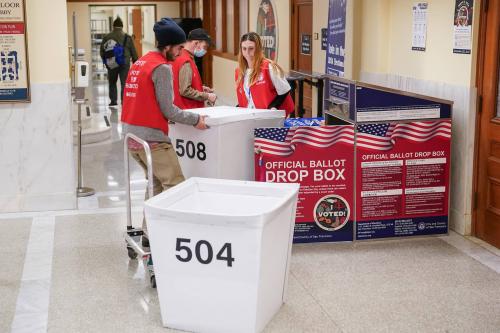“Pardon Edward Snowden.” “SOPHIES CHOICE, smear test lowered to 16.” These are the top petitions Americans and Britons are asking their respective governments on online petition platforms run by the White House and the U.K. Cabinet Office. So how does the world of online activism work when it comes to government-hosted petition sites?
The U.K. government began hosting e-petitions in November 2006. During the website’s first iteration, which lasted until March 2011, it received more than 12 million signatures from over 5 million unique email addresses.
The White House’s online petition website, We the People, was launched in September 2011. In the last two months of 2012 it was reported that use of the website more than doubled with about 2.4 million new users, 73,000 petitions and 4.9 million signatures.
The popularity of government-hosted petition websites has seen a steady ratcheting up of signature thresholds. At its launch, We the People required a petition to reach a mere 5,000 signatures within 30 days before it would merit an official White House response. The required number of signatures was then raised to 25,000 signatures, and, in January 2013, to the current 100,000 threshold. In the U.K., the first government petition website only required 500 signatures to secure an official response. The new website requires 10,000 signatures for a response and 100,000 for a parliamentary debate on the issue.
Governments have also established a moderation function for petitions. The White House insists that creators of petitions first generate 150 signatures before their petition can be publically searchable on the We the People site. The British government has a process for screening all e-petitions, with the responsible department having the chance to block them under certain circumstances (for example if they are libellous, jokes, offensive or related to honors). The whole process usually takes up to seven days.
The U.K. and the U.S. governments are of course not alone in this technological adoption (see the Bundestag’s Petitionen, for example, which began in 2005). The concept has even spread to the transnational level. On April Fools Day in 2012, the European Union waded into the world of online activism when the European Citizens’ Initiative (ECI) came into effect. The procedure allows any European citizen to propose legislative reforms, provided they can gather 1 million signatures from fellow EU nationals in at least one quarter of EU member states, and that authorities can verify them. It was ushered in by the 2009 Lisbon Treaty, and has been dubbed the world’s “first transnational instrument of participatory democracy.”
Thanks in part to the onerous petition process and cumbersome technology, the European Commission has registered just 24 ECIs since it launched. Thus far, only three have managed to overcome all the hurdles imposed by the European Commission (one concerning pro-life, another on vivisection and a third on water and sanitation) and two have received an official response.
So what impact do all these petitions have? Find out in part three soon.
Read Part 1 in this series, “Online Campaigning: Big and Evolving.”


Commentary
Online Campaigning Part 2: Governments Get Into Online Activism
December 1, 2014